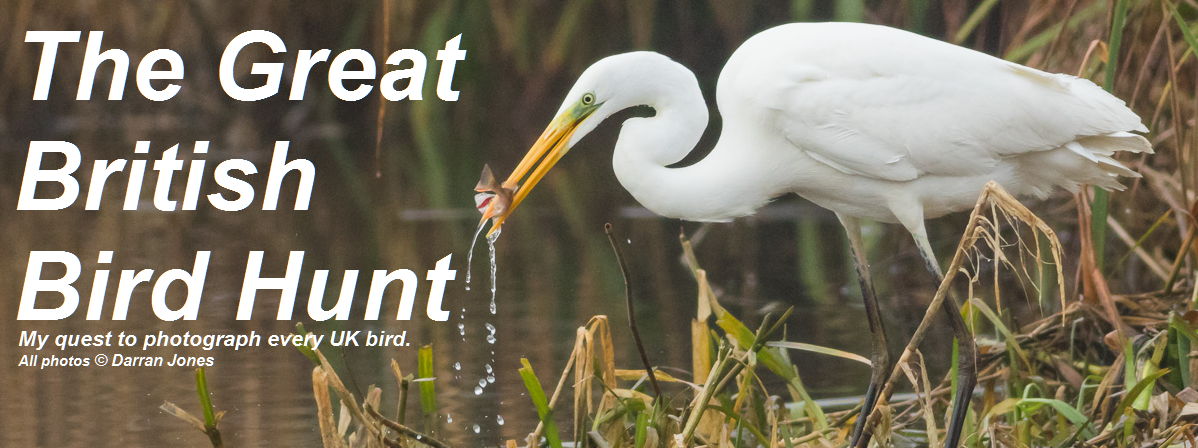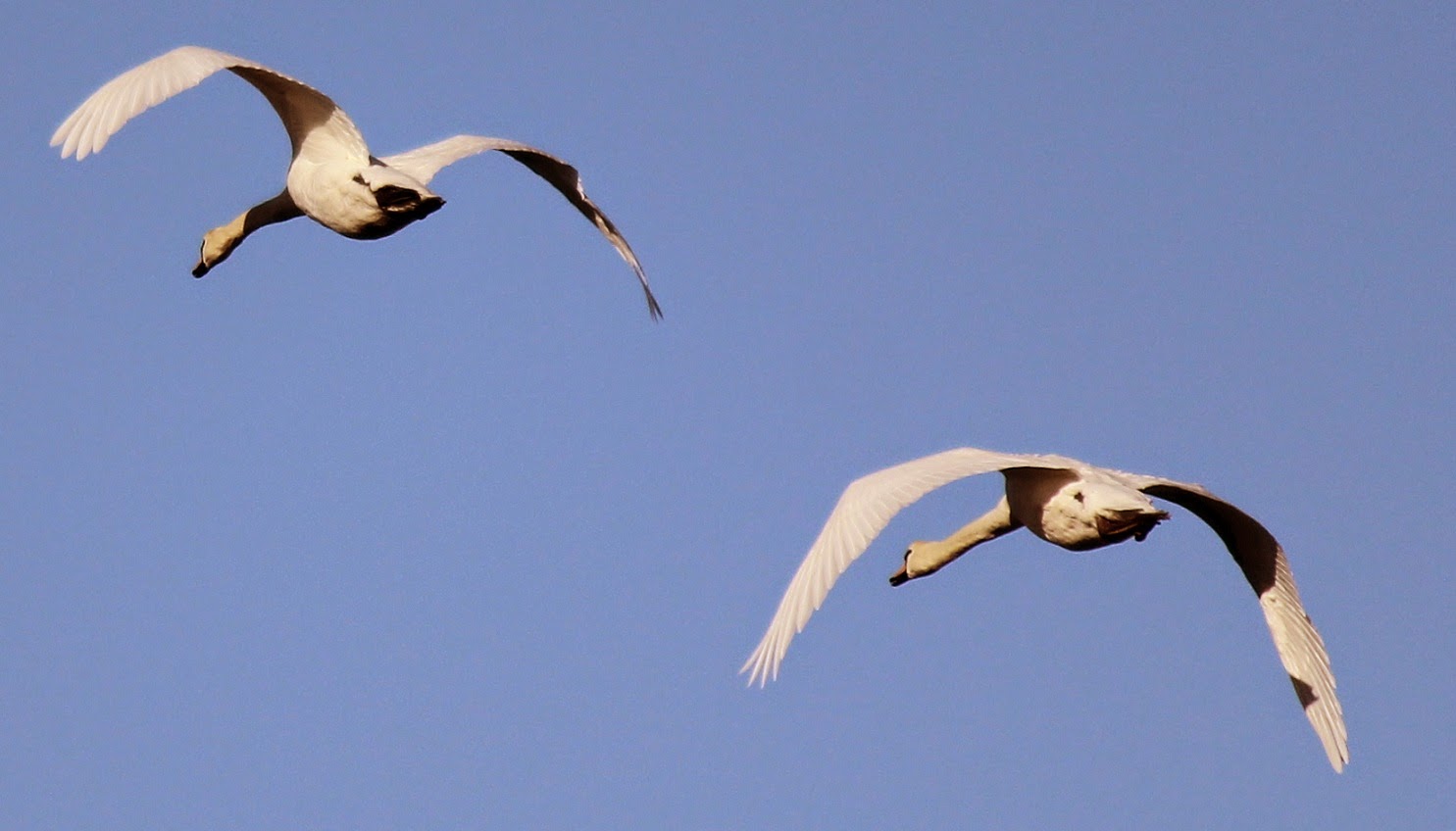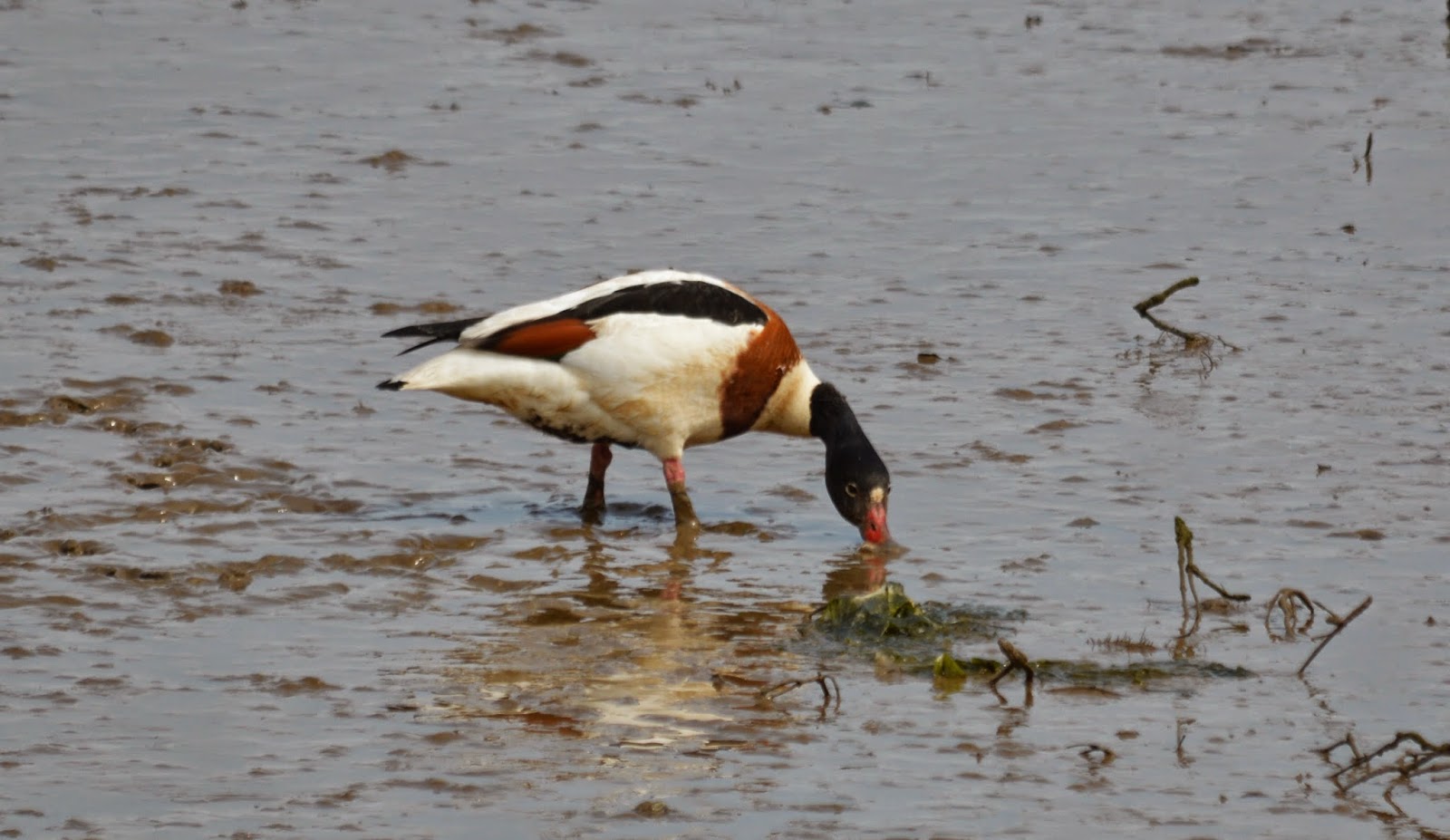
Quite a big update this week, mainly because I was fortunate enough to visit two RSPB reserves last bank holiday Monday.
The reserves in question were Radipole Lake and Lodmoor, and both a fantastic locations for visiting birds, particularly water birds like ducks and waders. I was lucky enough to spot 3 rare birds on my travels, but you can read about them elsewhere on this blog.
So without further ado let's get on with this week's spots.
Tufted Duck (Male and Female)
As soon as we arrived at Radipole Lake we were greeted with some gorgeous tufted ducks. They get their name thanks to the small tufts on the back of their heads, which make them look like they need a good haircut. The males are smashing looking birds, slightly smaller than a Mallard, with lovely black and white colouring. The females are a little drabber, but I managed to get a nice shot of one having a little flap.
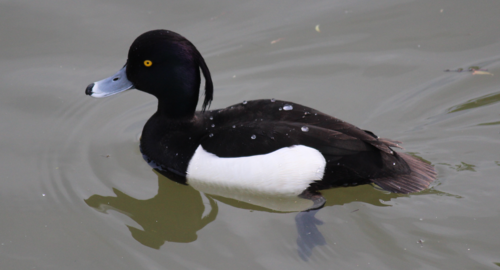
Here's the male, having just been for a dive.

And here's the female.
Carrion Crow
The Carrion Crow is extremely common and you'll often see them in town centres as well as the countryside. They're often confused with Ravens, but that bird is far larger and stocker with a much thicker, murderous looking beak. While the Carrion Crow is fairly mundane to look at compared to some of our more colourful crows, it's highly watchable thanks to its inquisitive nature. It gets its name from its non-fussy food habits, and will happily eat anything it can stick its beak into. I spotted the first crow on my walk to Radipole's hide and caught the second flying onto the roof of the reserve.
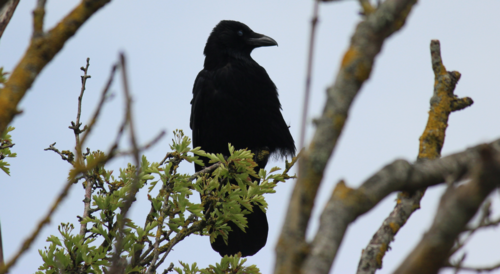
Ravens are stockier than this with much bigger beaks.
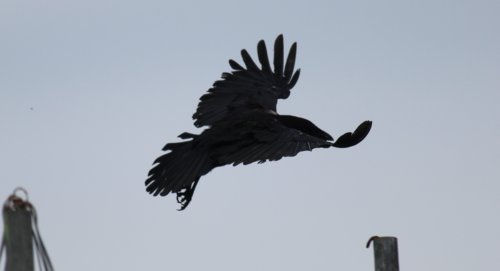
Despite their size, Carrion Crows can be surprisingly acrobatic in flight.
Coot
There's no mistaking a Coot and there were a large number of them at Radipole Lake. They're related to the more diminutive and colourful Moorhen and are very distinctive due to the white shields above its beak. The saying 'Bald as a Coot' comes from this bird and it's found throughout the UK. It's worth watching them landing and taking off from a pond as they make a lot of comical commotion as they run across the water's surface ready for take-off.

This one was taken at Radipole Lake.

And this one was seen at Lodmoor.
Cormorant
Sadly, we only have one Cormorant native to the UK. It's a fantastic fisherman, which often puts it at odds with anglers. In some countries, it's even used to catch fish, with a string put around its neck to stop it swallowing what it's caught. This one had spent most of his time diving, so was happily sunning himself. The Cormorant is sometimes mistaken for the very similar Shag, but its white cheeks do give it away. While they are coastal birds by nature, it's not unusual to see them at lakes and reservoirs.

Pochard (Male and female)
Pochards are beautiful looking ducks with striking reddish brown heads that make them easy to identify. They're found throughout the UK and are a regular sight at many ponds and lakes. Interestingly, while over 48,000 Pochards winter here each year, less than 700 pairs actually breed here. They're slightly smaller than Mallards and quite timid, easily getting chased off by other ducks as they hunted around for food.
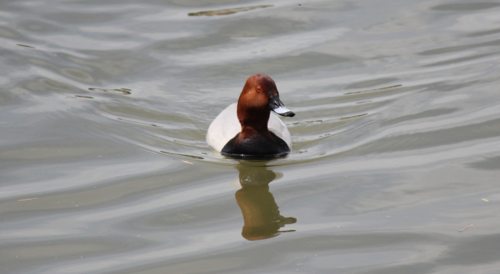
Here's a male. Look at how red his eyes are.

And this is a female. The males look quite similar after moulting.
Swift
Okay so this isn't the greatest shot, but there's no mistaking the sycthe-like wings. It's most at home on the wing (it can even sleep in the air) and will happily hawk around barns and open fields for insects. The Swift is a voracious eater and can eat over 10,000 flies in a single day when it's brooding. While similar in size to the Swallow, it lacks the Swallow's red throat and its tail isn't as pronounced. We saw this one up by Radipole Lake's hide and it proved to be a real bugger to photo as it was so fast.
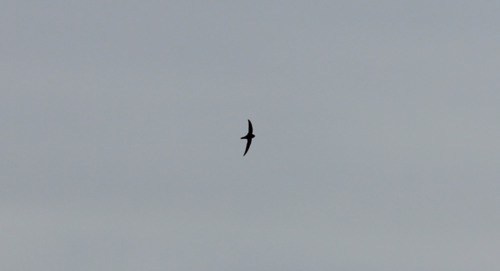
Iceland Gull
When we were walking back to the main centre there was a lot of commotion inside, with bird watchers rammed wall to wall. It turned out that in amongst all the Herring Gulls was a rather beautiful looking Iceland Gull. After some direction I was able to spot it, and got a slightly better shot when it flew over to one of the islands closer to the visiting centre. It's quite dainty for a gull and is noticeable for its snowy white plumage. Only around 240 birds regularly winter here, making this quite a spot for me.
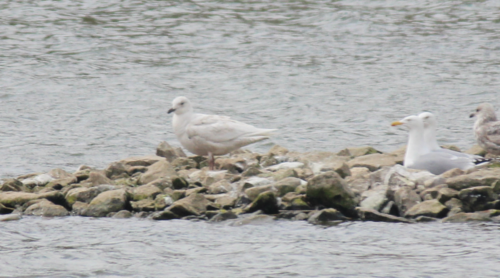
Feral Pigeon
This is the more common version of the Rock Dove. You see pigeons absolutely everywhere, so it's somewhat amazing that it's taken me a month to take a photo of some. Known as flying rats, and seen as pests by many, they're easily one of the UK's most common birds and, as you can see here, come in a surprising range of colours and patterns.
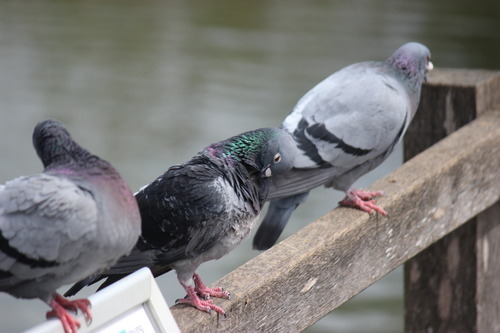
The following birds were all spotted at Lodmoor. It's basically a large nature trail with a few handy view points that runs parallel to the beach at Weymouth. This is where I saw the Black-Winged Stilt.
Bar Tailed Godwit
As the tide was out we didn't see too many waders. I did get a good look at this Godwit however. It was quite resplendent with its chestnut colouring (it's a far drabber bird in the winter) and this one also had some rather fetching rings on its legs. The Bar-Tailed Godwit doesn't breed here, using our country as a wintering ground. Up to 41,000 birds can be found here, although this one was all on its own.
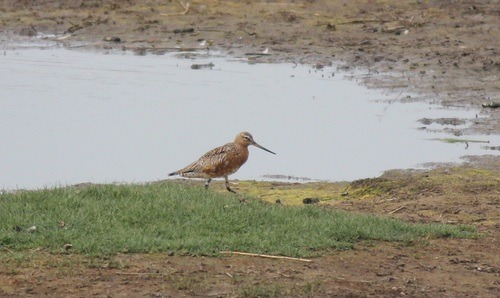
Canada Goose
This is quite a common goose that was introduced from North America many years ago. It's now found all over the UK with over 62,000 birds breeding here. I was lucky enough to come across this delightful family, who watched us warily as we walked along one of the nature trails. It's one of our bigger geese and has some striking colouration. I particularly like the second shot which shows a protective father bringing up the rear as his chicks raced off.
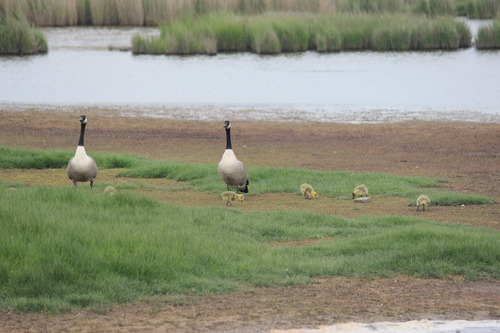
Five gorgeous little chicks.
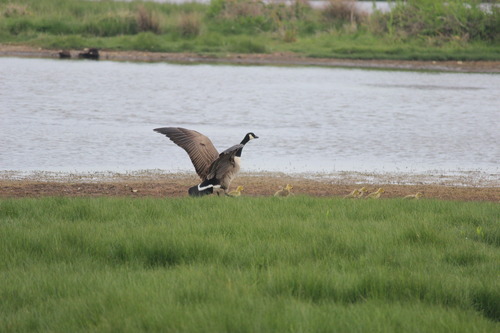
Don't worry kids, I'll protect you!
Linnet (female)
As I was walking down one of the trails I spied this tiny little finch, gathering nesting materials. It's been confirmed by RSPB members as a female Linnet and it's a fairly common bird (although rarer than it used to be). Once kept as a song bird, the males are extremely striking thanks to their crimson breast and forehead.
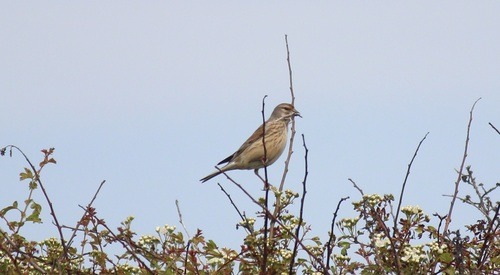
Gadwell
Another bird identified for my by kind members of the RSPB forum. This one's a male Gadwell and as you can see it's quite a non-descript bird with few notable markings. This one was quite a way off in the distance, which is why the shot doesn't look fantastic.
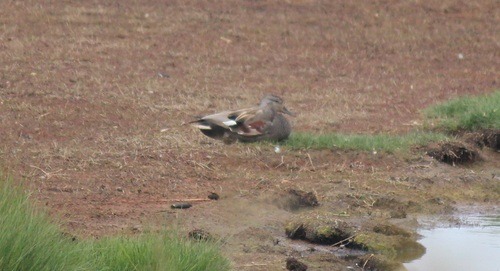
Grey Heron
Herons are amazing looking birds and I always enjoy taking photos of them. There were quite a few on Lodmoor lake and it was great to see them suddenly take off and fly around looking for better hunting spots. Keen fishermen they can stay still for ages, waiting for the right moment to strike. I'll take a photo of one with a fish in its mouth one day, but that day was not today.
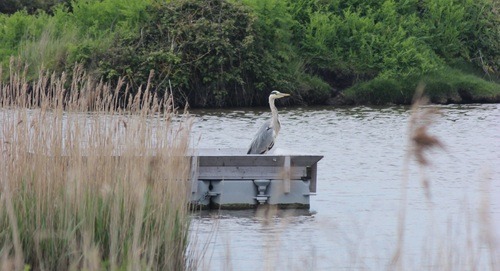
A solitary fisherman, waiting for his prey.
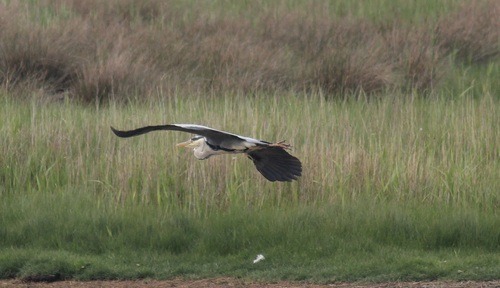
A nice shot of a Heron in flight.
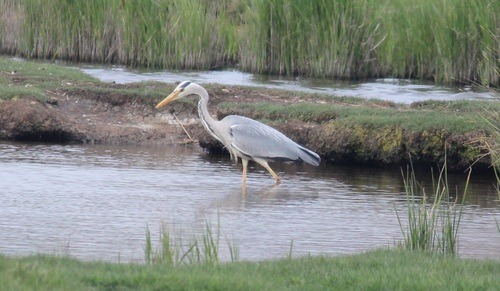
And here's one looking for fish.
Little Egret
Similar to the Heron, this is a fair daintier, more beautiful looking bird. Often mistaken for a Cattle Egret, this is a stunning looking that has become more and more common in recent years. It first began breeding in Dorset in 1996 and there are now over 700 breeding pairs found here. We often spot them at Throop when we visit the lake there, but somehow they seemed more natural here.
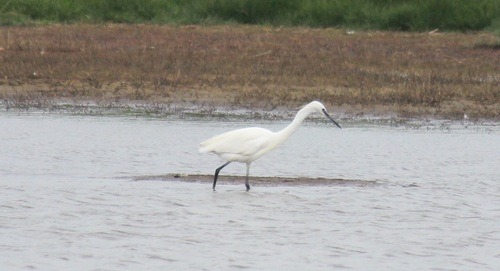
Oystercatcher
Although I saw some Oystercatchers at Lodmoor, I spied this fellow at Arne. It's not the greatest of shoots as I was shooting with a hefty 500mm lens, but you can still see that it's a striking looking bird. It's easily identifiable thanks to its bright orange bill, while it's black and white plumage also makes it stand out.
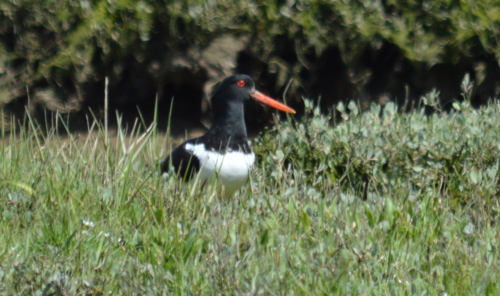
Oystercatchers really are beautiful birds.
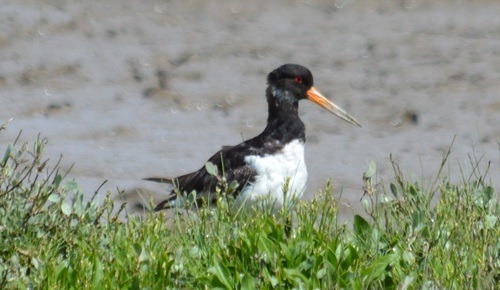
I also saw this one, but it looked quite scruffy.
Moor Hen
I've already mentioned the more diminutive relative of the Coot, but here it is in the flesh. Like the Coot it has a shield above its beak, but the Moorhen's is far more striking. It's a lot more timid than the Coot and far smaller, often scared awway by noisier birds. It's a common UK bird with over 250,000 pairs regularly breeding here.

So that's it for another week. I'm going to hopefully get out to Arne nature reserve this coming Saturday with the aim of spotting some more waders. Quite a good showing though meaning I've now seen 48 birds leaving another 224 left to find.
